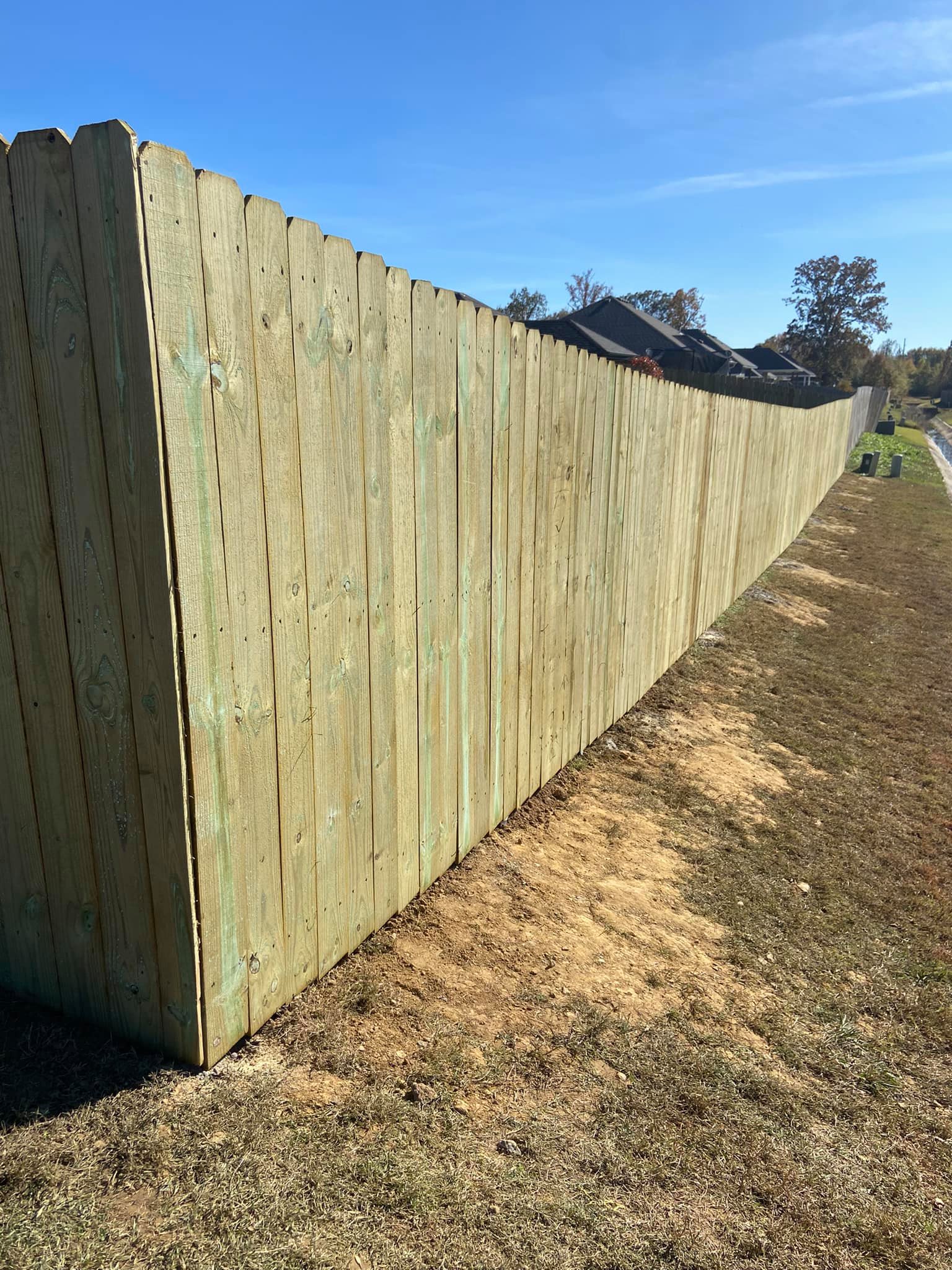Specialist Guide to Fence Installment: Discovering Numerous Types to Take Into Consideration
Each fence material offers one-of-a-kind advantages and considerations that can significantly influence the installment process and total capability of the fencing. From the ageless allure of wood fencings to the longevity of plastic, the adaptability of chain-link fences, the beauty of functioned iron, and the reduced upkeep of composite alternatives, there is a vast variety of selections to navigate.

Timber Fences
Among the numerous kinds of fences, wood fences attract attention as a popular choice because of their classic charm and natural aesthetic. Timber fences have been a typical favorite for property owners, supplying a classic appearance that enhances a selection of building designs. The warmth and appeal of wood include a touch of beauty to any kind of home, boosting its total beauty and visual appeal.
One of the key benefits of wood fences is their flexibility. They can be quickly personalized to suit various preferences, whether you choose a rustic, rugged appearance or a much more polished and refined coating. Wood fencings also give a sense of personal privacy and safety and security, creating a limit that defines your home while maintaining undesirable visitors away.

Vinyl Fencings
Vinyl fences are a modern fence alternative known for their sturdiness and reduced upkeep needs. These fencings are made from PVC (polyvinyl chloride) materials, which offer exceptional resistance to the elements, such as wetness, UV rays, and parasites. One of the essential benefits of vinyl fencings is their durability; they are developed to endure severe climate condition without decaying, warping, or fading, making them an economical financial investment in the long run.
Unlike wood fencings that may require regular staining or painting, vinyl fencings keep their shade and coating for years with minimal effort. Whether you choose a timeless white picket fence or a modern privacy fence, vinyl fence provides both visual charm and useful capability for household and commercial residential or commercial properties alike.
Chain-Link Fences
Chain-link fencings, likewise called wire-mesh fences, are a preferred selection for both domestic and business residential or commercial properties because of their cost and versatility. These fences are built making use of galvanized steel cable woven right into a ruby pattern. Among the crucial benefits of chain-link fencings is their inexpensive contrasted to various other visit their website fence alternatives, making them an attractive selection for those seeking to safeguard their residential property on a budget plan.
In addition to price, chain-link fencings are understood for their resilience and reduced maintenance demands. They are immune to deterioration, making them ideal for holding up against different climate condition without deteriorating rapidly - fence installation. These fencings are very easy to mount and can be tailored in terms of height and color to match different aesthetic choices.
Chain-link fences are generally made use of to safeguard household lawns, play areas, commercial estates, and sports fields. While they might not give as much privacy as solid fences, they provide safety and security and boundary meaning. Generally, chain-link fencings are a sensible and cost-efficient fencing service for numerous applications.
Wrought Iron Fencings

When thinking about choices for resilient and aesthetically attractive secure fencing remedies, Wrought Iron Fences stand apart as a timeless option with remarkable visual and safety and security benefits. Wrought iron fencings are renowned for their traditional sophistication and toughness, making them a popular selection for property, business, and historical properties. These fencings are not just visually striking yet also supply exceptional protection and long life.
One of the vital benefits of wrought iron fences is their longevity. Made from iron that is heated and molded right into shape, Our site these fences are unbelievably solid and can withstand rough climate condition, making them ideal for long-lasting use. Additionally, wrought iron fencings call for marginal upkeep contrasted to other fence products, such as timber.
In addition, wrought iron fences provide an included layer of safety and security to homes. Their strong building and construction and elaborate styles make them tough to breach, boosting the security and privacy of the encased area. Whether made use of for attractive objectives or safety procedures, wrought iron fencings are a flexible and trusted fencing alternative for various settings.
Composite Fences
Compound fences use a contemporary and environmentally-friendly fence solution that incorporates the sturdiness of various products to develop a functional and low-maintenance choice for domestic and business residential or commercial properties. These fences are normally made from a mix of wood fibers and plastic, giving the toughness of wood and the weather-resistance of plastic. One of the crucial advantages of composite fencings is their resilience; they are resistant to rot, degeneration, and pests, making them a long-lasting investment. Additionally, composite fencings come in a selection of colors and designs, permitting property owners to find the excellent match for their aesthetic preferences.
Unlike traditional wood fencings that need regular painting or staining, composite fences just need occasional cleaning with soap and water to preserve their look. On the whole, composite fences provide a durable, flexible, and attractive fencing view it remedy for contemporary properties.
Conclusion
To conclude, when thinking about fence installment, it is very important to explore different types such as wood, plastic, chain-link, wrought iron, and composite fencings. Each type has its own benefits and disadvantages, so it is vital to carefully evaluate your needs and choices before deciding. By recognizing the distinctions in between these fencing alternatives, you can choose the very best one that fits your residential property and budget.